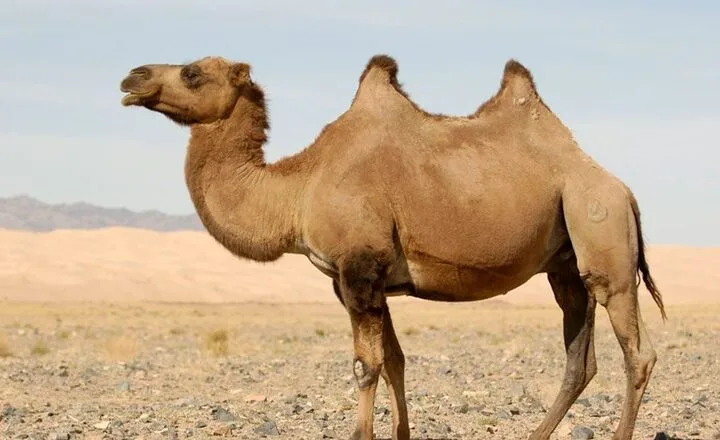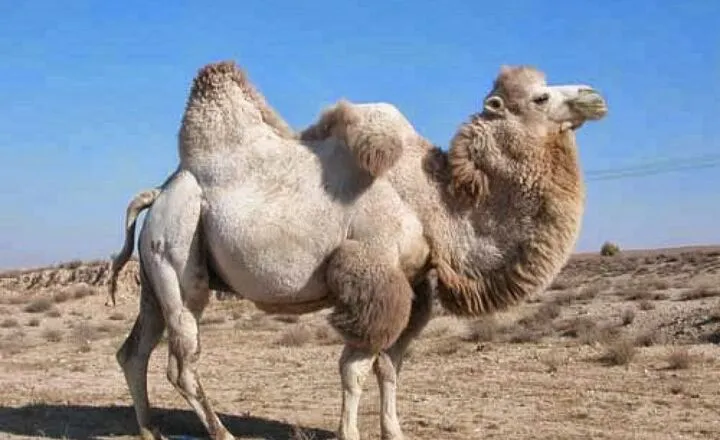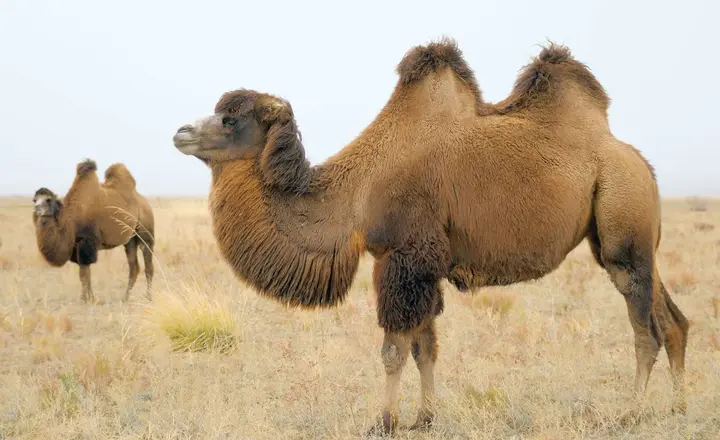In the world of deserts camels stand tall as iconic symbols of resilience and adaptability. Their signature humps have long captivated the curiosity of travelers and scientists alike, sparking a debate that stretches back centuries that Why Do Some Camels Have Two Humps?
Beyond their charming appearance lies a deep-rooted mystery waiting to be unraveled. Are these dual-humped creatures simply a quirk of nature, or do their distinctive features hold secrets to survival in harsh environments?
Why Do Some Camels Have Two Humps?
Bactrian camels have two humps because they belong to a separate species from the one-humped camels. The two humps are a distinguishing feature of Bactrian camels, which sets them apart from other species of camels.
These humps are actually reservoirs of fat that provide energy and sustenance for the camel during long periods without food or water.
The presence of two humps in Bactrian camels is an evolutionary adaptation to their harsh desert environment. The extra fat stored in the humps allows them to survive in extreme conditions where food and water may be scarce.
Is Wild Bactrian Double Humped?
The wild Bactrian camel is indeed double-humped. The wild Bactrian camel is a distinct species from the more commonly known domesticated Bactrian camel.
Both species are recognized for their unique feature of having two humps, which sets them apart from other camel species that typically have only one hump.
Are two humps just a sign of beauty?
While the two humps on a camel are often associated with beauty and grace, they also serve a practical purpose. The humps are actually reservoirs of fat that provide the camel with energy and sustenance during long periods of travel in arid environments.

This unique adaptation allows camels to survive in harsh desert conditions where food and water may be scarce.
They are indeed aesthetically pleasing and add to the majestic appearance of these animals. The distinctive silhouette created by the humps, along with their other physical features such as long necks and strong legs, contribute to the overall allure and beauty of camels.
What Are Two Humps For
The two humps on a camel serve as an energy-rich fat storage system, allowing them to survive in harsh desert environments where food and water may be scarce.
These humps store fats that can be used as a source of energy when resources are limited, enabling camels to go longer periods without food.
They are particularly adept at surviving in arid regions due to their ability to store significant amounts of fat in their humps.
Two humps on a camel play a crucial role in helping the animal regulate its body temperature. The fat stored in the humps acts as insulation, helping to keep the camel cool during hot days and warm during cold nights.
Do Two Humped Camel Function Differently?
They may appear to function similarly to their single-humped counterparts, there are some key differences in their physiology that allow them to thrive in different environments.
The two humps of a Bactrian camel provide them with additional storage capacity for both fat and water, making them better equipped to survive in harsh desert conditions where resources are scarce.
The presence of two humps also impacts the distribution of weight on the camel’s body, providing better balance and stability when carrying heavy loads.
This makes Bactrian camels well-suited for use as pack animals in mountainous regions where rugged terrain is common.
What Does It Mean To Have Two Humps?
Having two humps on a camel signifies that it belongs to the Bactrian camel species, known for their ability to store fats in these humps.

This adaptation allows them to survive in harsh desert environments where food may be scarce. The two humps provide a reserve of energy that can sustain the camel for extended periods of time without needing to eat.
These camels have a greater capacity for endurance and can go longer without food or water. Their unique physiology has made them well-suited for life in the arid regions of Central Asia where they are commonly found.
Do These Humps Aid In Riding?
The two humps of a Bactrian camel do aid in riding. The dual humps provide a more stable and comfortable seat for the rider, making the experience smoother compared to riding a single-humped camel.
This unique feature also sets Bactrian camels apart from their more common one-humped counterparts, adding to their rarity and value in certain regions.
While one-humped camels make up the majority of the camel population, the distinct advantages of riding a two-humped camel make them sought after for those looking for a different and potentially more enjoyable riding experience.
Camel Humps Store Water How True Is That
While it is a common misconception that camel humps store water, they actually store fat. Camels have adapted to survive in arid environments by storing excess fat in their humps, which can be converted into energy when food and water are scarce.
This fat storage allows camels to go long periods without food or water, making them well-suited for desert climates.
Camels are also efficient at conserving water through various physiological adaptations. They have the ability to reabsorb water from their urine and feces, as well as reduce their sweat production to minimize water loss.
Facts About Camels
Camels are fascinating animals with many unique characteristics. Contrary to popular belief, camels do not actually store water in their humps.
The hump is filled with fat which can be used as a source of energy when food and water are scarce. As the fat is consumed, the hump diminishes in size but reappears once the camel finds food to replenish its reserves.
Another interesting fact about camels is that they have a clear, invisible eyelid that helps protect their eyes from sandstorms.

They also have the ability to shut their nostrils to prevent sand from entering while navigating through harsh desert conditions.
Camels are known for their resilience and adaptability, being able to consume large amounts of water quickly and surviving in arid environments where other animals would struggle.
They have oval-shaped blood cells and use blowing as a form of greeting or communication among themselves, while spitting is a defensive mechanism they employ when feeling threatened.
Conclusion
The presence of two humps in some camels serves as a remarkable adaptation to their harsh desert environment. These humps store fat reserves, providing energy and insulation during long periods without food or water.
The ability to regulate body temperature effectively in extreme conditions is crucial for survival in arid climates.
Understanding the evolution and function of these humps sheds light on the incredible adaptations that have enabled camels to thrive in some of the world’s most challenging environments.
FAQs
What is a female camel called?
A female camel is called a cow or a female camel. Just like in many other animal species, the term cow is commonly used to refer to adult female camels.
Is there a 4 hump camel?
There is no such thing as a naturally occurring four-hump camel. Camels typically have either one or two humps, depending on the species.
What are baby camels called?
Baby camels are called calves, just like baby cows. These adorable creatures are born after a gestation period of around 12 to 14 months and are typically able to stand and walk within hours of birth.
